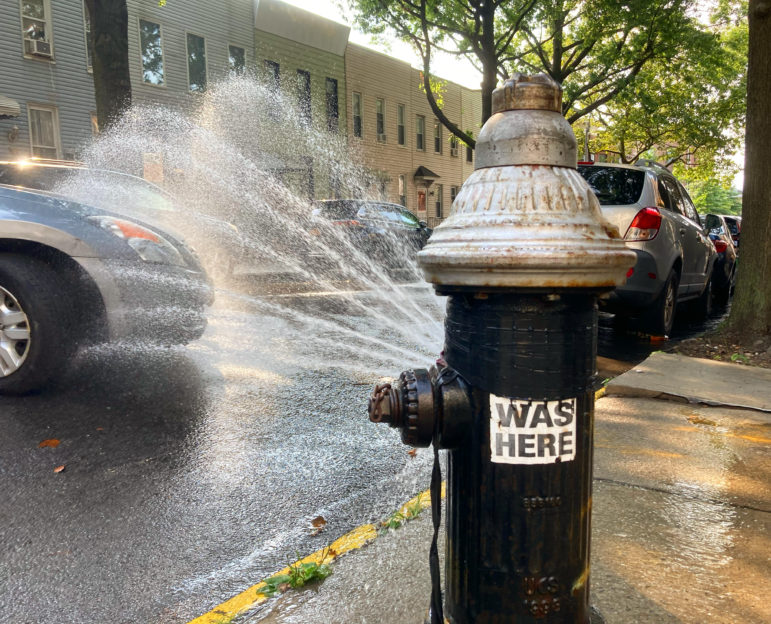Black New Yorkers were two times more likely to die from heat conditions than other city residents over the last decade, a report by New York City’s Health Department shows.

Jeanmarie Evelly
An open fire hydrant in Brooklyn during a summer 2021 heat wave.
Black New Yorkers were two times more likely to die from heat conditions than other city residents over the last decade, a report by New York City’s Health Department shows.
Of the just more than 100 New York City residents who have died from heat stress since 2010, 43 percent were Black, according to a report released this summer that analyzed heat stress-related deaths between 2010 and 2020, though it looked at only preliminary numbers from the last two years.
Many of the deaths were related to heat exposure at home, and 81 percent of those cases were individuals without air conditioning. Most of these deaths were in the outer boroughs, including 36 percent in Brooklyn and 24 percent in Queens. Three individuals who died from heat were experiencing homelessness.
“Structural racism and an inequitable distribution of resources needed for wellness (e.g., jobs that pay a living wage, access to quality health care, and access to housing with air conditioning) are causes of racial inequities in heat-related mortality,” the report notes. The city’s Health Department quietly released the report in June, but linked to it recently as part of an announcement related to Climate Week.
Previous and ongoing research has shown that communities of color are more likely to be plagued with heat islands—neighborhoods with higher temperatures than surrounding areas—linked to highways, lack of green space and other factors.
The report also estimated that an average of 347 deaths each year, or 2 percent of all natural-cause deaths between May and September, were likely exacerbated by heat.
The heat death numbers represent a decrease from the previous decade, when an average of 13 New Yorkers died each year from heat between 2000 and 2011. But the most recent assessment included no data from 2021, when the city experienced multiple record-breaking heat waves, including one in July that put the city’s electrical grid at risk of overload.
Scientists project the health impacts of heat will worsen as the effects of climate change and global warming increase. Five years ago, researchers at Columbia University predicted that as many as 3,331 New York City residents may die each year from heat by 2080.
Increasing temperatures across the nation have prompted federal and local legislators to take action in protecting vulnerable individuals from heat exposure.
In 2020, when citywide cooling centers were not open due to the COVID-19 pandemic, Mayor Bill de Blasio launched the “Get Cool” program, which distributed air conditioners to low-income New Yorkers over 60, targeting neighborhoods with the highest levels of both heat and COVID risk. About 74,000 AC units were distributed through the program, said John Scrivani, commissioner of the city’s Office of Emergency Management, at a press conference during a heat wave in June.
Additionally, a similar program run by New York’s Office of Temporary and Disability Assistance has distributed more than 30,000 air conditioners statewide over the past five years.
Last month, the Biden administration announced it was implementing multi-agency efforts to mitigate heat risk among workers and other vulnerable communities, including low-income individuals without air conditioning.
A week later, Mayor de Blasio released a report detailing how the city will combat extreme weather going forward, including by appointing Emma Wolfe, the deputy mayor for administration, to the new post of extreme weather coordinator in City Hall.
In a press conference on June 30, during one of this summer’s heat waves, de Blasio urged New Yorkers who needed respite from the extreme temperatures to use the city’s cooling centers—public spaces, like community centers and libraries, equipped with air conditioning. But critics noted that these centers were sparse in some parts of the city, including Queens, and many of the centers closed that day well before the heat advisory expired.
Liz Donovan is a Report for America corps member.








